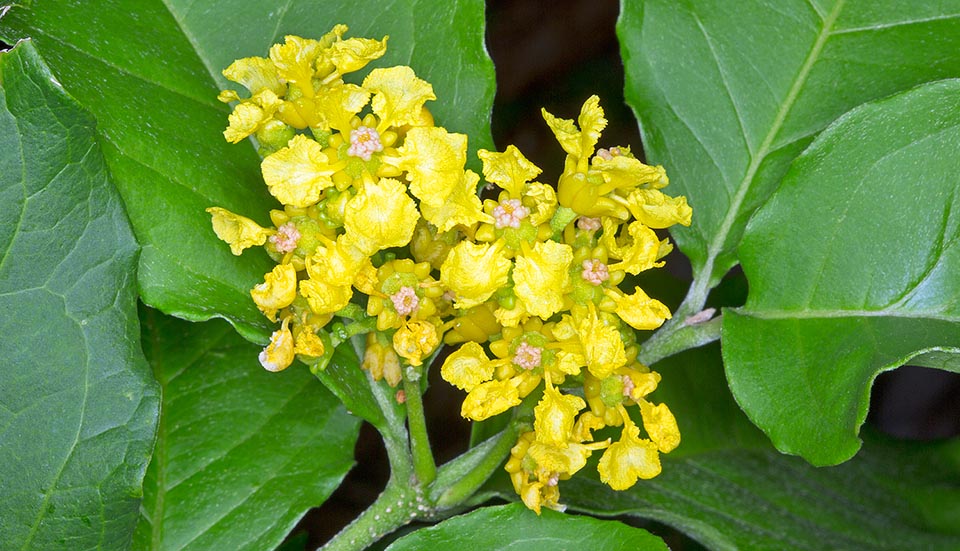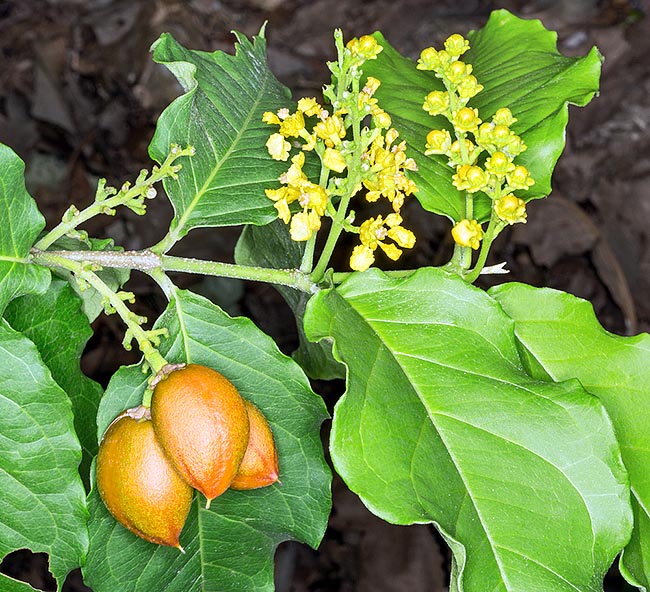Family : Malpighiaceae

Text © Pietro Puccio

English translation by Mario Beltramini
The species is native to Bolivia, Brazil, Colombia, Ecuador, Peru and Venezuela where it grows in the forests from the sea level up to about 2400 m of altitude.
The name of the genus comes from one of the name in Arabic, “buncho”, of the coffee plant (Coffea arabica L.) due to the resemblance of the seeds; the name of the species refers to the shape and colour of the fruits, similar to those of the apricots (Prunus armeniaca L.).
Common names: monk’s plum, peanut butter tree, Peruvian plume (English); bunchosie abricot, bunchosie des Andes, cerise des Antilles (French); ameixa-brava, ameixa-do-Peru, caferana, cafezinho, ciruela, falso guaraná (Portuguese-Brazil); chico mamey, ciruela de fraile, ciruela silvestre, ciruela verde (Spanish).

Native to tropical America, Bunchosia armeniaca is an evergreen that can be 20 m tall with 8-15 cm inflorescences © Giuseppe Mazza
It usually reproduces by seed, that does not have a long lasting germinability, in draining loam maintained humid, but without stagnations, at the temperature of 24-26 °C, with germination times of 1-2 months and first fructification starting from the second-third year of age.

The 4 cm long fruits are edible and various parts of the plant have medicinal properties © Giuseppe Mazza
It requires full sun, or at the most a light shade, and draining soils rich of organic substance, preferably slightly acidic to slightly alkaline maintained humid. Where the climate does not allow the continuous permanence in open air, it can be cultivated in capacious containers to be sheltered during the coldest months in luminous ambient with minimum temperature levels not under the 15 °C. The waterings must be frequent in summer, more spaced in winter, without ever allowing the substratum to dry up completely and the fertilizations, in spring, done with a slow-release product.
The fruits, with creamy and sweet pulp with a taste reminding us that of the peanuts, are locally consumed fresh or utilized for jellies, jams and for aromatizing the dishes.
Parts of the plant are utilized in the traditional medicine for various pathologies, laboratory studies have evidenced the presence in the leaves extracts of bioactive compounds with antibacterial and anti-inflammatory properties.
Synonyms: Malpighia armeniaca Cav. (1789); Bunchosia pilocarpa Rusby (1907); Bunchosia armeniaca f. parvifolia Nied. (1914); Bunchosia armeniaca f. systyla Nied. (1914).
→ To appreciate the biodiversity within MALPIGHIACEAE family please click here.
